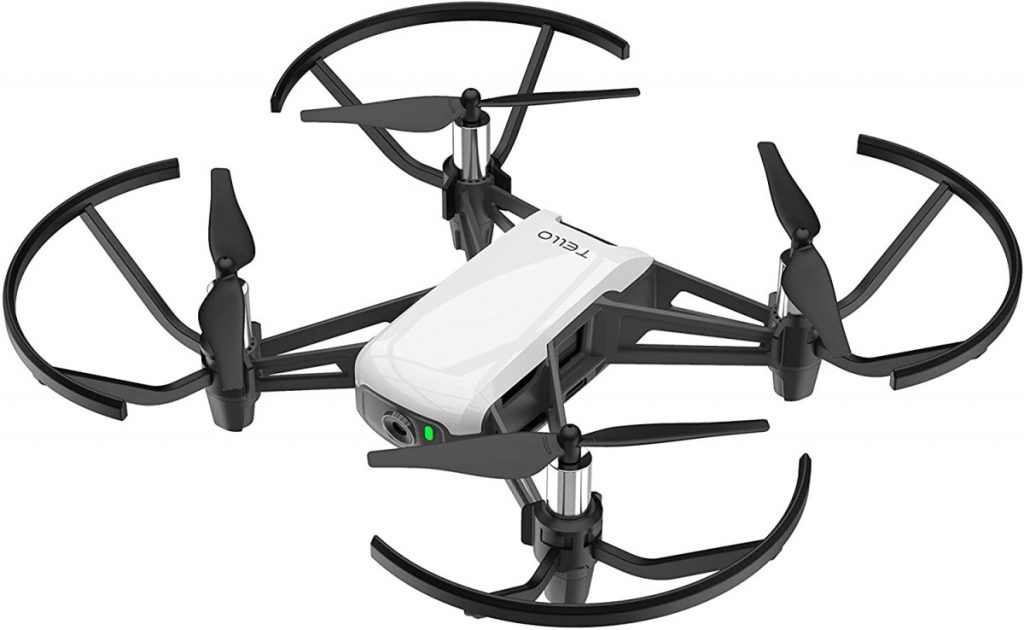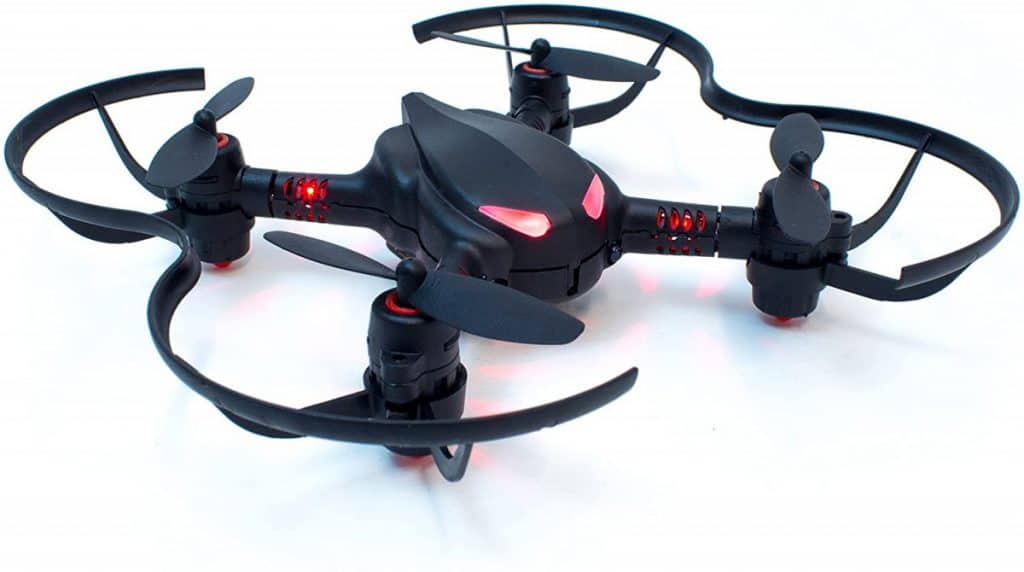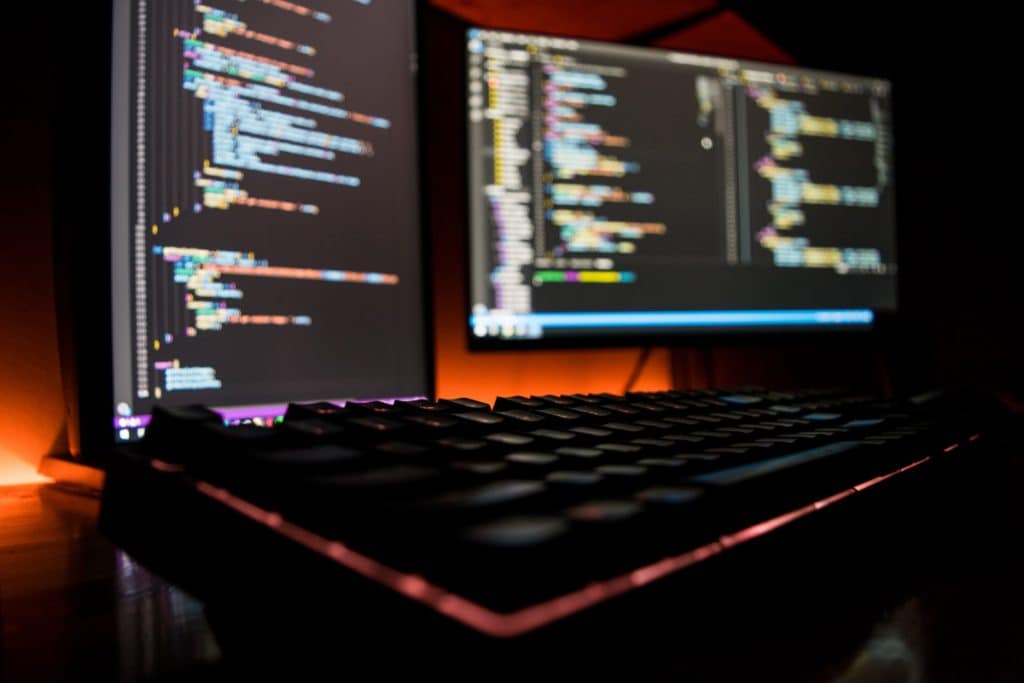Plenty of drone platforms and hardware are available that allow developers to explore drone flight and programming limits. The type of development you can do depends on which hardware you will be using as a flight controller. If you are using Arduino, it will be Arduino code which is very similar to C+. There are also plenty of open source projects to choose from and learn from so that you can improve and develop your programming skills and develop drone software.
The type of drone you should purchase depends on what type of development you want to do and where your skills are currently positioned.
I recommend reading some awesome books such as:
To learn how to program a drone to fly – I was also amazed at how little drone flying kits can cost for students – look here and here (I think this is the best one!).
What type of development do you want to do?
Many manufacturers have created drones capable of being programmed by children using high-level development building blocks. Otherwise, you can opt for learning a programming language or choosing hardware that allows you to work in your programming language of choice.
Low-level programming – firmware
Programming to build drones is very different from programming a drone to perform tasks. Building a drone involves interfacing the senses and feedback controllers with some processor to make the drone fly stably.
The drone hardware and firmware requires low-level programming to handle the most fundamental operations, such as taking measurements from the inertial measurement unit and helping determine the amount of power that should be pushed to the drone motors to keep it stable and level.
Other fundamental operations such as battery life and voltage readings mean that this coding type can quickly get complicated.
The code to develop drone software will likely be C and C++. These are not the easiest languages to master, but plenty of online courses can teach you how to do it.
High-level programming
High-level programming is the second layer of programming and is often performed in another language such as Python, Java, and JavaScript.
At this level, the firmware has already been programmed to perform the requests from different drone applications. This type of development makes high-level programming accessible to new developers, and all of the nitty-gritty and firmware components have already been taken care of.
At this point, you are more worried about using the application programming interfaces (API) in the drone’s software to tell it to perform certain tasks. This level of programming includes things like programming a drone to autonomously take off, drive from one waypoint to another, maintain a particular height above the ground, follow an object, or more.
Programming a drone is very different from programming a drone to perform tasks. One involves interfacing and connecting the drone components to make the drone flight possible, whilst the other requires a drone on a computer where code can be written and compiled to perform tasks.
Understanding exactly what you want to do for buying a drone for developing software will determine which drone is best for your development needs.
In this article, we will look at high-level and low-level programmable drones to cover both options.
Table of best drones for developers
Here is a list of the best drones for developers that can take you from high-level programming (telling the drone what to do and where to go) down to low-level programming, where you need to build your drone and get the components working together.
| Ryze Tech Tello | More info |
| Robolink CoDrone Pro | More info |
| Robolink CoDrone Mini | More Info |
| PlutoX Drone Kit | More info |
| Parrot ANAFI | More Info |
| DJI Matrice series | More Info |
Ryze Tech Tello – Best high-level programming drone
This drone is awesome for learning all about programming as it supports the programming app scratch.

This drone may be small and lightweight but it has a tonne of features powered by a very reputable drone manufacturer, DJI. DJI are the leaders when it comes to drones and they have perfected this entry-level drone. Here are the features that this drone comes with:
- Tello App – The Tello app makes it really easy to fly. It makes even the most complicated maneuvers just a simple touch of a button.
- Lightweight – this very small drone fits in the palm for your hand and weighs only 80g.
- You can perform stunts – start flying by tossing the drone up into the air with the Throw&go technology. You can also perform stunts and tricks (like flips) using the app
- Safe to fly indoors – Thanks for rotor guards and it’s vision positioning system the Tello drone is fun and safe to fly indoors
- 13 minute flight time – a huge flight time for a drone of this size powered by the best drone batteries on the market – DJI batteries!
- Programmable – You can learn the basics of programming by using Scratch – an MIT developed coding system especially suited for students. Fly your own flight patterns
This thing is by far the best drone for travelers that are new to drone flying and want to test the waters of capturing their adventures.
Pros
+ Lightweight
+ Really inexpensive
+ super easy to fly
Cons
~ Needs another battery for continuous fun
~ May not be robust enough for heavy travel
Programmers can command Tello to perform corresponding movements by dragging coding blocks on their smart mobile devices. They can also develop programming skills by playing games and completing levels (some require payment to open up the levels).
Scratch is an MIT developed coding system that allows kids and teens to learn the basics of programming while also flying drones. But the drone doesn’t just stop at students. If you are a more advanced programmer or want to push the limits of research, you can also develop software applications using the Tello software development kit.
Robolink CoDrone Pro – Best drone for learning to develop drone programs
This drone is the first-ever programmable drone that was designed to teach programming. It includes several free online tutorials and has a programmable remote. If you want to learn to code,

They are the first educational drone that directly addresses the need for stem education using drone technology. It is recommended for children between the ages of 10 and 18 years but will suit anyone who wants to learn how to develop drone software.
It only takes approximately 10 minutes to build and fly your drone, and then you learn how to program the drone using custom flight patterns and other flight features – even battling other CoDrones.
This drone comes in mini, light, and pro versions to tailor the hardware to match the sort of development you wish to do.
Build your own drone – best for low-level programming
Building your drone is undoubtedly one of the best ways to get into the nitty-gritty of programming and developing code for drone projects.
To understand the current technology used for drone development, you should check out the peer-reviewed article “a survey of open source UAV flight controllers and flight simulators”.
Using open-source flight controllers reduces some of the shortcomings currently available with closed source controllers and enables researchers to build upon existing research. The paper looks at more than 20 different open-source hardware, software, and simulation platforms that would be appropriate for not only academic research but serve as the basis for a commercial product as well.
If you are serious about using open source software for your research purposes, you should consider reading this paper. It is available free of charge at researchgate – click here.
Here are some of the open-source drone projects that you should follow:
- LibrePilot – this software suite is designed to allow control of drones and other radio-controlled objects. The project is built on top of the open pilot UAV software. The founders are committed to creating an open and collaborative environment and also work with other similar projects.
- Flone – flown is a project that aims to turn a smartphone into a drone. It combines a digitally fabricated airframe with software that allows an Android smartphone on the ground to control one strapped to the airframe via a Bluetooth connection.
- ArduPilot – “The ArduPilot Project provides an advanced, full-featured and reliable open source autopilot software system. The first ArduPilot open code repository was created in 2009. Since then, it has been developed by a team of diverse professional engineers, academics, computer scientists, and other global community members. It can control almost any vehicle system imaginable: conventional and VTOL aeroplanes, gliders, multi-rotors, helicopters, sailboats, powered boats, submarines, ground vehicles and even Balance-Bots. The supported vehicle types frequently expand as use cases emerge for new and novel platforms.” Over 1 million vehicles worldwide use these analysis and simulation tools.
The awesome thing about the open-source codebase is that it is always rapidly evolving and remains at the cutting-edge of technology. If you are considering using open-source software, make sure that it is an active codebase and actively maintained.
Ensuring that you select the appropriate hardware and software combination will be important for exploring the low-level programming and development you desire.

Buyers guide: best drone for developers
Here is a guide for determining which is the best drone for developers.
Who is the drone for?
Ultimately, you have to understand who the drone is for.
To pick the best drone for a developer, you must understand the developer’s limits and preferred languages.
Suppose the drone developer is only new to the drone development world. In that case, you should consider purchasing a high-level programmable drone that allows the person to use drag and drop building blocks to program flight patterns and flight details into the drone.
This level of programming will be annoying for people with much higher development and software knowledge.
In this case, a drone that can be fully customised and programmed using open source software is likely to be the best option for you.
Programming language
Selecting a development drone with the appropriate programming language will keep the drone interesting and challenging enough for problem-solving and the sense of satisfaction that comes from overcoming coding challenges.
Choose a drone with a good application programming interface with the programming language you want to work in.
For example, the parrot drone series often has a Java API which enables you to code in Java. You can also use C++ or Python, and there are other options made viable by other API frameworks meant for this drone.
Ensure that the drone you purchase has a robust and well-supported API framework for your desired programming language.
Getting to the lowest level of drone development means selecting the right program language and hardware.
For example, Arduino would be a good choice for someone wanting to get to a lower level of drone development. However, Arduino is not necessary a programming language but rather a group of C++ functions and commands that can be evoked and called through Arduino sketch.
Robustness
If you are doing a lot of drone development, your drone will likely crash and come into contact with things regularly.
I would recommend using a drone with high robustness. Drones used for educational purposes tend to be lighter weight than camera drones because they are less likely to break upon crashing.
Choose a lightweight drone with cheap replacement parts if you want to minimise the amount of damage and cost upon heavy landing or accidents.
Choosing a build it yourself kit with carbon fibre will also minimise the number of parts you need to replace if you have significant accidents and heavy landings.
Are DJI drones programmable?
Most consumer-grade DJI drones are not open software or available for programming. That is because DJI is a manufacturer constantly developing drone stability and flying software, and it wants to keep that information in house as a competitive advantage. However, a couple of drones and robots allow the user to program their movement and collect data from sensors. These are typically used for educational purposes and therefore are probably not super suitable for research. Still, they are worth a mention just if you find a drone in the DJI range that is perfectly suitable for your research.
Here is a list of DJI drones that are programmable:
- DJI Matrice – we have talked about this above, and the DJI Matrice is an expensive option but offers a fully programmable and customisable drone experience.
- Ryze Tello – this drone is perfect for education, and you can even upgrade the programming interface to include Python and JavaScript. It is perfect for research as it is inexpensive but still has onboard cameras and programmable sensors.
The final word
This article has been over everything you need to know about the best drones for developers. It very much depends on the type of drone development that you wish to do. There are many high-level programming options for drones if you want to tell a drone to perform a particular action. However, if you want to get into the drone’s low-level programming, you should consider building your own and using an open-source drone software kit for programming and tinkering with your DIY drone.
![Best drones for developers [C++/ JAVA/ API options]](jpg/best-drones-for-developers-768x480.jpg)



